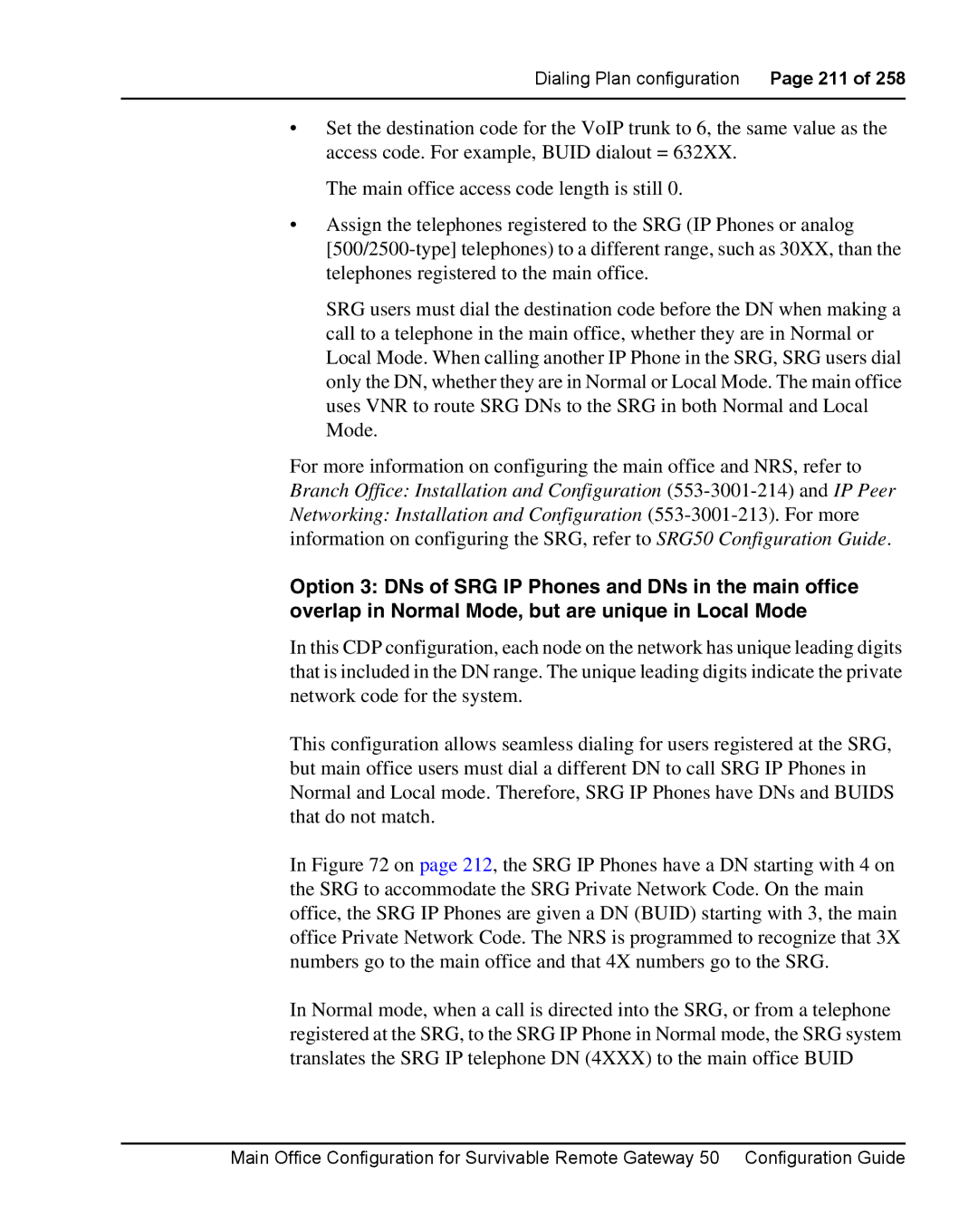
Dialing Plan configuration Page 211 of 258
•Set the destination code for the VoIP trunk to 6, the same value as the access code. For example, BUID dialout = 632XX.
The main office access code length is still 0.
•Assign the telephones registered to the SRG (IP Phones or analog
SRG users must dial the destination code before the DN when making a call to a telephone in the main office, whether they are in Normal or Local Mode. When calling another IP Phone in the SRG, SRG users dial only the DN, whether they are in Normal or Local Mode. The main office uses VNR to route SRG DNs to the SRG in both Normal and Local Mode.
For more information on configuring the main office and NRS, refer to Branch Office: Installation and Configuration
Option 3: DNs of SRG IP Phones and DNs in the main office overlap in Normal Mode, but are unique in Local Mode
In this CDP configuration, each node on the network has unique leading digits that is included in the DN range. The unique leading digits indicate the private network code for the system.
This configuration allows seamless dialing for users registered at the SRG, but main office users must dial a different DN to call SRG IP Phones in Normal and Local mode. Therefore, SRG IP Phones have DNs and BUIDS that do not match.
In Figure 72 on page 212, the SRG IP Phones have a DN starting with 4 on the SRG to accommodate the SRG Private Network Code. On the main office, the SRG IP Phones are given a DN (BUID) starting with 3, the main office Private Network Code. The NRS is programmed to recognize that 3X numbers go to the main office and that 4X numbers go to the SRG.
In Normal mode, when a call is directed into the SRG, or from a telephone registered at the SRG, to the SRG IP Phone in Normal mode, the SRG system translates the SRG IP telephone DN (4XXX) to the main office BUID
Main Office Configuration for Survivable Remote Gateway 50 Configuration Guide
